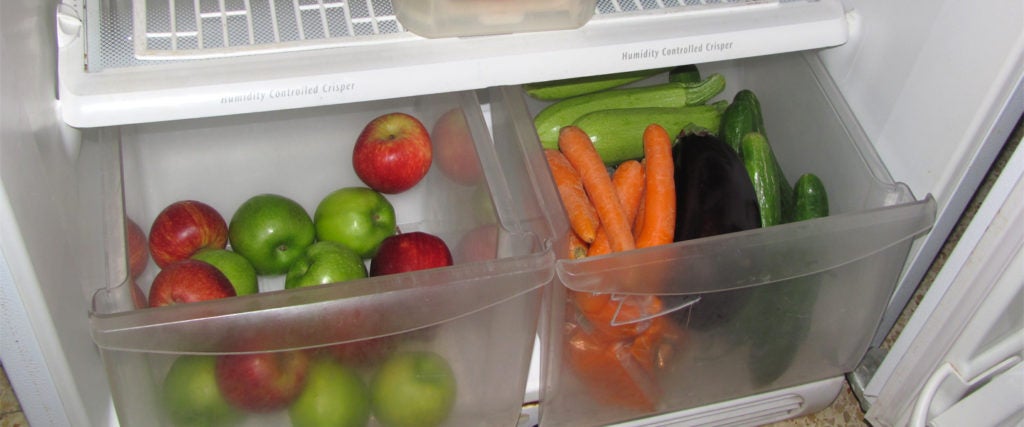I’ve always thought that the crisper drawers in refrigerators just existed for organizational purposes. Not once did I stop to ask myself why they were called “crisper” drawers — that’s someone else’s business. But apparently, they’re not just drawers. Or at least, they’re hypothetically not just drawers.
As the name suggests, a crisper drawer is designed to keep fruits and vegetables, um, crisper. Crispness, in this context, has to do with the water content. Crisp lettuce has a higher water content, while wilted lettuce has lost some of its water. The goal of a crisper drawer, then, is to help fruits and vegetables maintain their water content. This is achieved by keeping the humidity in the drawer high. All this basically requires is that the drawer is tightly shut, so humidity can’t escape.
That said, not all produce does well in an enclosed, high-humidity environment. Many fruits, for example, release ethylene gases that contribute to further rotting. If these gases are trapped in an enclosed, humid drawer, the contents will rot much faster. Some refrigerators have specific settings for a low-humidity drawer, while others just have better circulation than the enclosed drawer.
Usually, if your fridge actually has separate humidity-controlled drawers, they’ll be labeled something like “crisper” for the high humidity drawer and “fruit” for the low humidity drawer. When buying a new fridge, you can tell if it has these options if it mentions “humidity control” among its features.
With some models, though, your crisper or fruit and vegetable drawers are just… drawers. In my fridge, neither drawer is labeled or sealed shut. Presumably, they serve no special function but to keep my produce in place.
But even without humidity settings, it’s not a bad idea to organize the contents of your drawers, regardless. If you don’t have a sealed drawer, a large Tupperware container with a lid or even a plastic bag will keep vegetables that prefer high humidity fresher for longer. Along those lines, most hand-held fruits (apples, pears, bananas) release ethylene and should be kept separate from the vegetables you want to last longer. Alternatively, if you want something to ripen faster, store it with ethylene-producing foods. Potatoes and tomatoes release ethylene, too. Most of the produce in this category will do just fine outside of the fridge, but the ripening process will happen to nearby foods just the same.
Citrus is an outlier, however. Citrus of any variety will do better in the fridge, and will do best if kept in the crisper drawer with high humidity. It will do fine next to vegetables like carrots, asparagus and leafy greens that prefer the humidity, as well.
So to sum things up, while your crisper drawer might just be a bullshit regular drawer, the theory behind it is legitimate. And therefore, even some thoughtful organization is better than nothing.
Can’t handle it? Buy frozen. Otherwise, you’re straight up wasting your own money.

